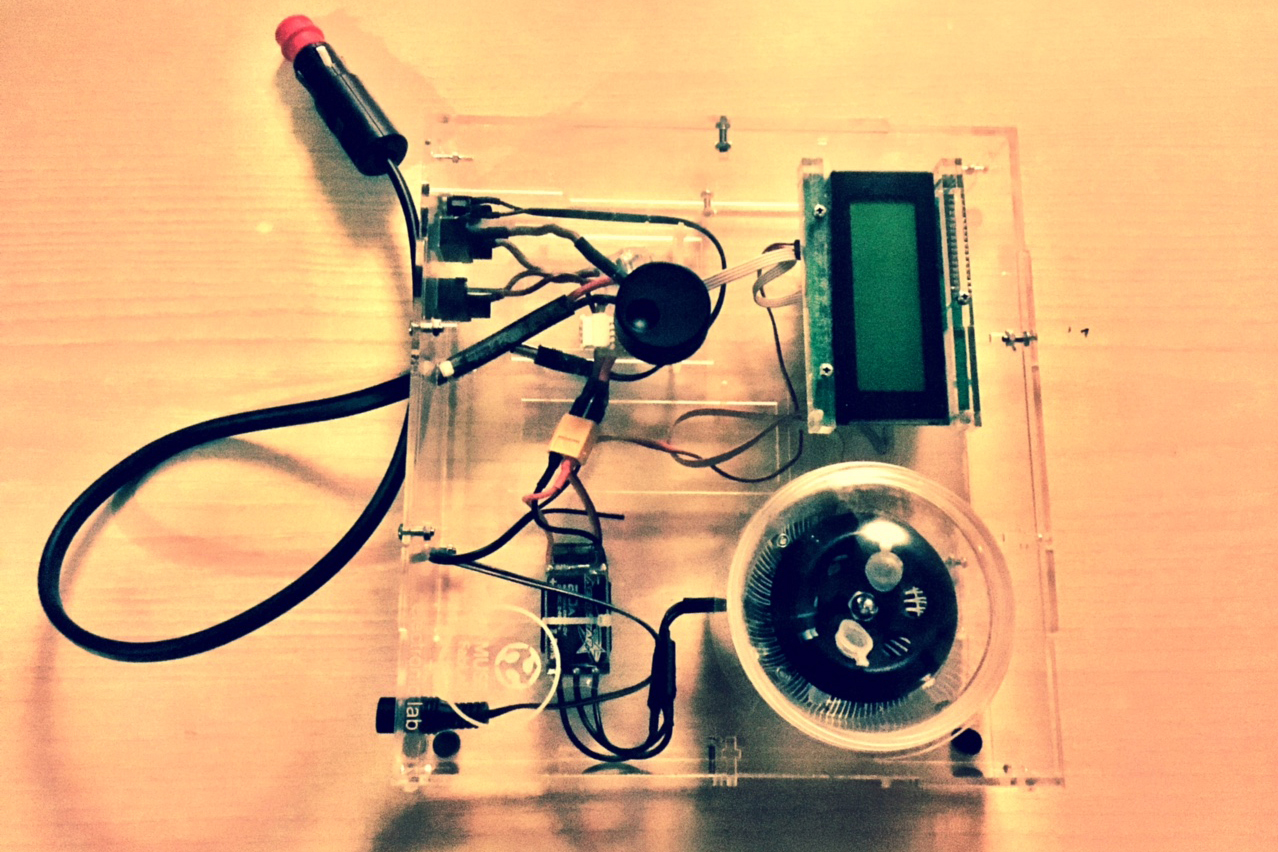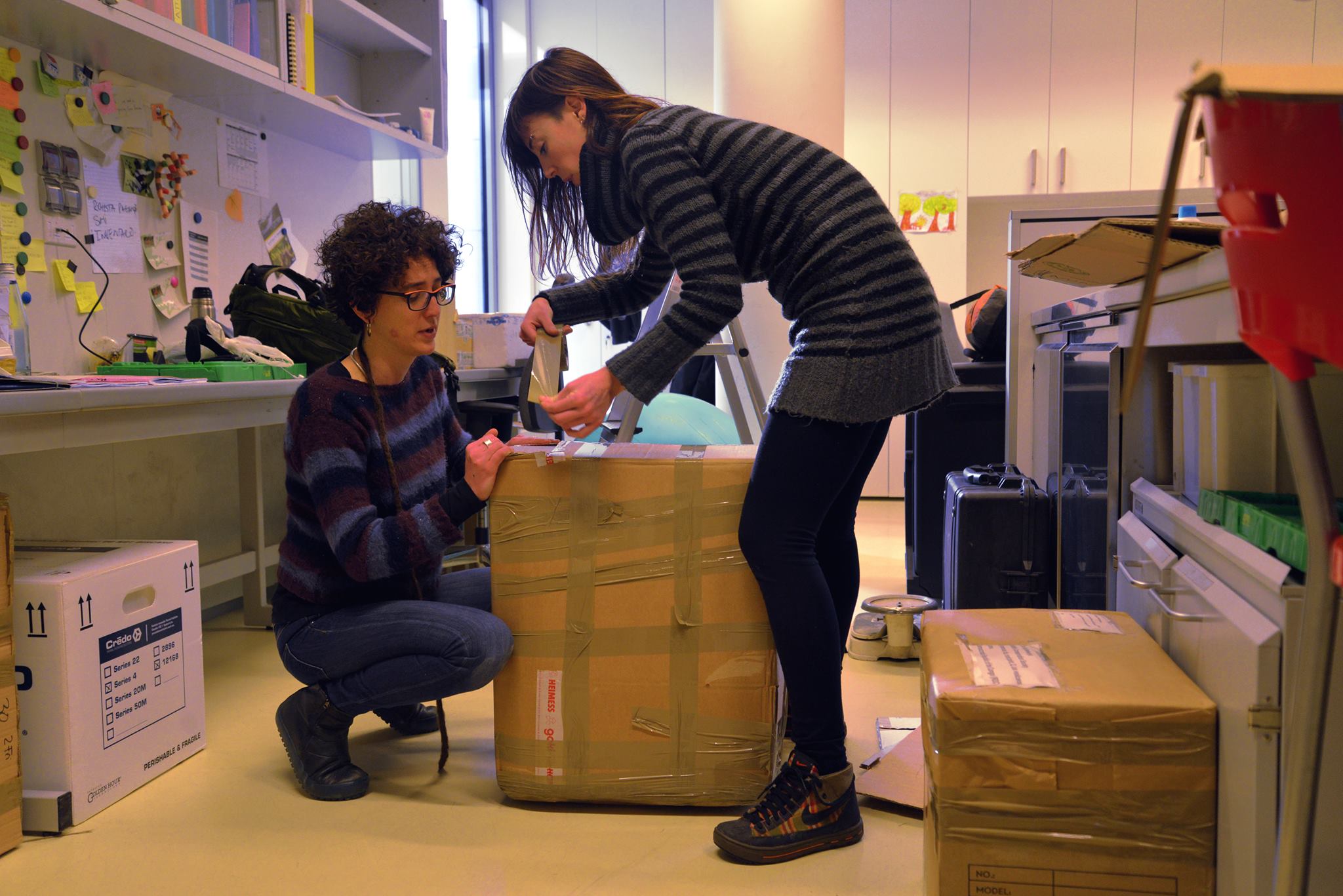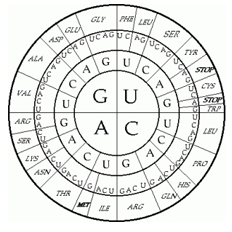
Hi there!
This is our DIY-Centrifuge, the last component of Gene. Learn more about it here. If you want to give it a name let us know your idea on our Facebbok page.

Hi there!
This is our DIY-Centrifuge, the last component of Gene. Learn more about it here. If you want to give it a name let us know your idea on our Facebbok page.

A centrifuge is a piece of equipment that puts an object in rotation around a fixed axis (spins it in a circle), applying a potentially strong force perpendicular to the axis of spin (outward). The centrifuge works using the sedimentation principle, where the centripetal acceleration causes denser substances and particles to move outward in the radial direction. At the same time, objects that are less dense are displaced and move to the center. In a laboratory centrifuge that uses sample tubes, the radial acceleration causes denser particles to settle to the bottom of the tube, while low-density substances rise to the top (source: Wikipedia)
In this case, this DIY-Centrifuge is the result of a collaborative project between MUSE-FabLab and Franco Modena from MUSE-Science museum of Trento.
Here you can find the list of the principal materials:
1 x Kingduino Uno – Atmel Atmega 328-PU
1 x IIC/I2C/TWI Serial 2004 20×4 LCD Module For Kingduino UNO MEGA R3
1 x Turnigy D2205-2600KV 28g Brushless Motor CCW
1 x Aerostar 20A Electronic Speed Controller with 2A BEC (2~4S)
1 x Turnigy 12v 2-3S Basic Balance Charger
1 x Turnigy 2200mAh 3S 25C Lipo Pack
1 x Optek Retro-reflective Photoelectric Sensor

Hi there!
Yes! Finally, we are leaving. Our destination: Kabobo massif in the Democratic Republic of Congo. Gene is ready, all the materials are packed, we have our flight tickets ready, VISAs and passports. What’s missing? Our personal luggage. Last but not least, I have to pack at least a pair of trousers! 😉 Follow us in our Facebook page! See you in a month!

Hi everyone!
Thanks to Lodovico Lappetito and MUSE FabLab Gene has a new DIY-component. Do you want to learn how does it work? Here you can find all information about the project. A fluorometer or fluorimeter is a device used to measure parameters of fluorescence: its intensity and wavelength distribution of emission spectrum after excitation by a certain spectrum of light. These parameters are used to identify the presence and the amount of specific molecules in a medium. (source: Wikipedia)

A fluorometer or fluorimeter is a device used to measure parameters of fluorescence: its intensity and wavelength distribution of emission spectrum after excitation by a certain spectrum of light. These parameters are used to identify the presence and the amount of specific molecules in a medium.
Thanks to Lodovico Lappetito and MUSE FabLab Gene has a new DIY-component.
Do you want to learn how does it work?
Continue reading →
“This is the end of our mission in this beautiful forest but is also the beginning of a fantastic new scientific adventure…”
Video ©Martino Vincenzi

Hi everyone!
Finally Expedition Lab has a dedicated website where you can find information about our projects, get some DIY tips, stay in contact with us and log onto a brand new database that we’re developing to allow free access to our east African herpetofauna collection. Expedition Lab is an exciting container that gathers together people, research, travelling and much more. The first project realized in this context is called GENE. GENE is about studying biodiversity in the Earth’s hotspots bringing directly on site all the lab equipment needed, conveniently compacted in a comfy hand luggage. With GENE it is possible to carry out genetic analysis on whichever organism, from DNA extraction to DNA sequencing, without needing to rely on big expensive facilities. For the first time we tested GENE in Tanzania a few months ago, where we successfully sequenced a frog caught in the forest! If you are curious, find out more in the website or follow us on facebook and youtube!

HTGAA is a Synthetic Biology Program directed by George Church, professor of Genetics at Harvard medical school. The HTGAA is a part of the growing Academy of (almost) Anything, or the academany. The Academany is a distributed educational model providing a unique educational experience. Each Fab Lab that participates in the Academany program is part of a global Fab Lab / Academany network. These Fab Labs are Nodes that offer the Academany program.

Hackteria is a webplatform and collection of Open Source Biological Art Projects instigated in February 2009 by Andy Gracie, Marc Dusseiller and Yashas Shetty, after collaboration during the Interactivos?09 Garage Science at Medialab Prado in Madrid. The aim of the project is to develop a rich wiki-based web resource for people interested in or developing projects that involve bioart, open source software/hardware, DIY biology, art/science collaborations and electronic experimentation.

dusjagr labs was founded by Marc Dusseiller in April 2007 who is a transdisciplinary scholar, lecturer for micro- and nanotechnology, cultural facilitator and artist. He performs DIY (do-it-yourself) workshops in lo-fi electronics, hardware hacking, microscopy, music and robotics. Currently, he is developing means to perform bio- and nanotechnology research and dissemination (Hackteria | Open Source Biological Art) in a DIY fashion in kitchens, ateliers and in developing countries.